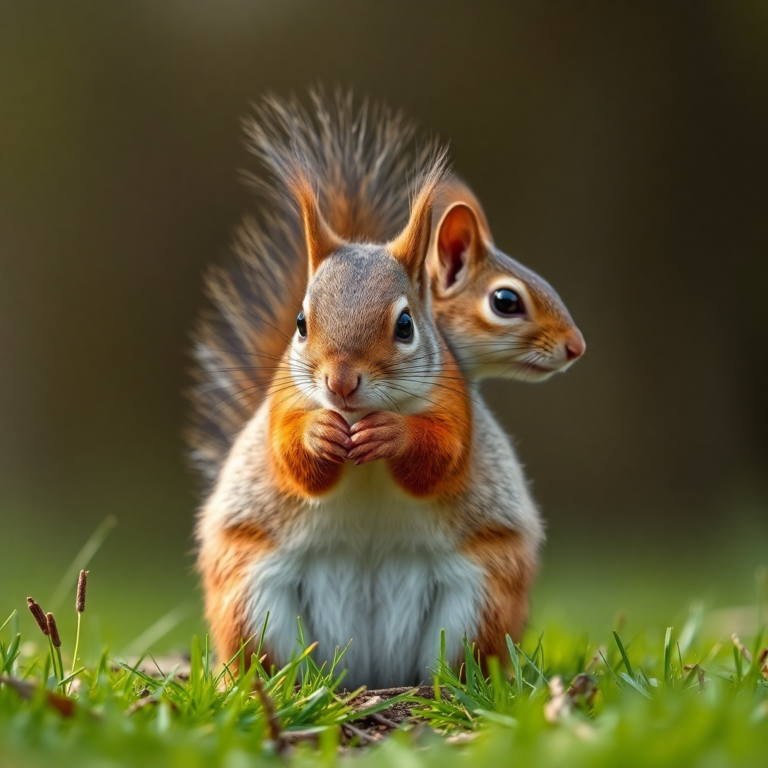What Is the Special Ability of a Hummingbird?
The first time I saw a hummingbird, it was like watching a tiny jewel dart through the air, hovering effortlessly before a flower.
Hummingbirds are small, vibrant birds belonging to the family Trochleae, known for their iridescent feathers and incredible agility.
These remarkable creatures possess a suite of “superpowers,” with their ability to hover in place being the most iconic. But there’s much more to these birds than meets the eye.
2.What Makes Hummingbirds Unique Compared to Other Birds
Hummingbirds are truly one-of-a-kind in the bird world. Their size, flight capabilities, memory, and metabolic demands set them apart in ways that continue to amaze scientists and bird lovers alike.
1. Tiny Size, Incredible Strength
Hummingbirds are the smallest birds on Earth, with some species weighing as little as 2 grams — less than a U.S. nickel. Despite their delicate size, they are remarkably strong:
-
Their wings beat up to 80 times per second.
-
They can fly at speeds of 30–34 mph, and dive at nearly 60 mph during courtship displays.
This strength-to-weight ratio is unmatched in the avian world.
2. Hovering and Flight Precision
What truly sets hummingbirds apart is their ability to hover in mid-air:
-
They are the only birds that can fly backward and even sideways.
-
Their wing structure and rotating shoulder joints allow figure-8 wing motion, giving them precision control over movement.
This flight agility has inspired aeronautical engineers studying drone and aircraft design.
3. Exceptional Memory and Intelligence
Hummingbirds have extraordinary spatial memory:
-
They remember the location of every flower and feeder they visit — even the timing of when each plant refills with nectar.
-
Studies show they can track complex feeding routes and return to the same spots year after year during migration.
This makes them not just fast but smart navigators in their environment.
4. Unique Feeding Habits
Unlike most birds that peck or forage, hummingbirds:
-
Use a long, forked tongue to lap nectar from flowers at 13 licks per second.
-
Visit hundreds of flowers per day to meet their energy demands.
-
Supplement their diet with tiny insects to get protein, fats, and minerals.
Their feeding behavior directly supports pollination, making them vital to many ecosystems.
5. Long-Distance Migrants
Despite their small size, hummingbirds migrate hundreds to thousands of miles:
-
Ruby-throated hummingbirds fly nonstop 500 miles across the Gulf of Mexico during migration.
-
They rely on fat reserves built up before their journey and navigate using instinct, the sun, and Earth’s magnetic field.
This endurance and navigation skill are rare in such tiny birds.
From their acrobatic flying skills to their sharp memory and intense feeding needs, hummingbirds break nearly every bird “rule.”
Their uniqueness is not just in their beauty and speed, but in how their entire biology is finely tuned for survival and agility.
Whether you’re a casual backyard birdwatcher or a wildlife researcher, hummingbirds remain one of the most fascinating subjects in the natural world.
3. The Most Famous Ability: Hovering in Place
Hummingbirds are renowned for their ability to hover mid-air for extended periods, a feat unmatched by any other bird.
Their wings rotate 180 degrees at the shoulder, allowing them to generate lift on both the upstroke and downstroke.
With wingbeat speeds of up to 80 beats per second, their flight resembles that of insects more than birds.
This hovering ability is often compared to helicopters or drones, but unlike mechanical devices, hummingbirds achieve it with extraordinary precision and efficiency.
Other birds lack the specialized wing structure and muscle power to sustain this kind of flight.
4. Other Special Abilities of Hummingbirds
a. Flying in All Directions
Hummingbirds can fly forward, backward, up, down, and even upside down, thanks to their unique wing mechanics. This omnidirectional flight allows them to maneuver through dense vegetation and evade threats with ease.
b. Extreme Metabolism and Energy Use
Hummingbirds have the highest metabolism of any animal, burning energy at a rate up to 100 times that of an elephant. To fuel this, they consume up to half their body weight in nectar daily, feeding every 10-15 minutes.
c. Fastest Heartbeat in Birds
During flight, a hummingbird’s heart can beat over 1,200 times per minute, enabling rapid oxygen delivery to support their intense activity. At rest, their heart rate drops significantly to conserve energy.
d. Advanced Color Vision
Hummingbirds can see ultraviolet light and a broader spectrum of colors than humans, helping them locate nectar-rich flowers. Their vision is finely tuned to detect subtle differences in flower patterns.
e. Long-Term Memory
Hummingbirds possess remarkable memory, recalling the location of every flower they visit and when it’s likely to refill with nectar. This cognitive ability maximizes their foraging efficiency.
f. Long-Distance Migration
Some species, like the Ruby-throated Hummingbird, migrate up to 2,000 miles, including a nonstop 500-mile flight across the Gulf of Mexico. They store fat equivalent to half their body weight and time their journeys to align with food availability.
5. How These Abilities Help Hummingbirds Survive
Hovering and omnidirectional flight help hummingbirds evade predators like hawks and cats. Their high metabolism and frequent feeding allow them to compete for nectar in crowded habitats. Their memory and speed enable efficient foraging, while their migration ensures they find suitable climates. These adaptations make hummingbirds resilient to habitat changes and environmental challenges.
6.How Hummingbirds Feed: A Closer Look
Hummingbirds are built for high-speed, high-efficiency feeding. Their small size and fast metabolism require them to consume large amounts of energy throughout the day. Here’s how their feeding process works in detail:
1. The Role of the Tongue
Hummingbirds have a unique, specialized tongue that allows them to extract nectar quickly and efficiently:
-
Their tongues are long, forked, and can extend well beyond the tip of their beak.
-
The tip of the tongue splits into two tube-like structures that flick in and out of the flower or feeder.
-
They don’t suck nectar like a straw; instead, they lap it up at an astonishing rate — about 13 licks per second.
-
Each lick causes the grooves in the tongue to open and close, trapping nectar through capillary action.
2. Hovering While Feeding
Unlike most birds, hummingbirds feed while hovering mid-air:
-
Their powerful chest muscles and rapid wingbeats — up to 50-80 beats per second — allow them to remain motionless while feeding.
-
Hovering lets them reach nectar deep within flowers or hanging feeders, often while adjusting their body and beak with extreme precision.
3. Nectar: Their Primary Fuel
Nectar is rich in sugar (primarily sucrose), which hummingbirds use as a high-energy fuel:
-
They consume half their body weight in sugar daily, depending on the season and activity level.
-
Nectar provides quick-burning energy needed for flying, hovering, and migration.
-
Common nectar sources include tubular flowers like trumpet vine, columbine, and bee balm, as well as artificial feeders.
4. Insects and Protein
Although nectar provides calories, it lacks nutrients like protein, fats, and vitamins:
-
Hummingbirds supplement their diet with small insects and spiders, especially during breeding season.
-
They catch gnats, aphids, fruit flies, and other tiny bugs mid-flight or pick them off leaves and flower stems.
-
This protein intake is essential for muscle maintenance, feather growth, and feeding young.
5. Feeding Frequency and Metabolism
Due to their high metabolism, hummingbirds must feed every 10 to 15 minutes during daylight:
-
Their hearts can beat up to 1,200 times per minute.
-
They enter a state of torpor (a temporary hibernation-like condition) at night to conserve energy.
-
Without frequent feeding, they would burn through their energy reserves in hours.
Hummingbirds are nature’s energy machines precise, fast, and constantly in motion.
Their feeding behavior is not just fascinating to watch, but it’s also a perfect example of evolution optimizing a species for a specific ecological niche.
Want to attract more hummingbirds? Use feeders filled with a 4:1 sugar-to-water mix (no red dye needed) and place them near native flowering plants.
7. Where to Spot Hummingbirds in the USA
Common species include the Ruby-throated Hummingbird (eastern USA), Anna’s Hummingbird (West Coast), and Rufous Hummingbird (Pacific Northwest).
They’re most active in spring and summer, with migrations peaking in April-May and August-September. To attract them to your yard, plant native flowers like bee balm or salvia and hang nectar feeders.
8. FAQ
Can hummingbirds fly backward?
Yes, their unique wing structure allows backward flight, a rare ability among birds.
Do hummingbirds sleep?
Yes, they enter a state called torpor at night, slowing their metabolism to conserve energy.
How far do they migrate?
Some species travel up to 2,000 miles, including nonstop flights over the Gulf of Mexico.
How much nectar do they need each day?
They consume up to half their body weight in nectar daily, feeding every 10-15 minutes.
Can you feed them by hand?
With patience, some hummingbirds may feed from handheld feeders, but it’s rare and requires trust.
9. Conclusion
Hummingbirds’ extraordinary abilities hovering, omnidirectional flight, rapid metabolism, and keen memory make them one of nature’s most remarkable creatures.
By planting native flowers or setting up feeders, you can support these tiny marvels. Observe, photograph, or share your hummingbird sightings to spread appreciation for their unique place in the ecosystem.







